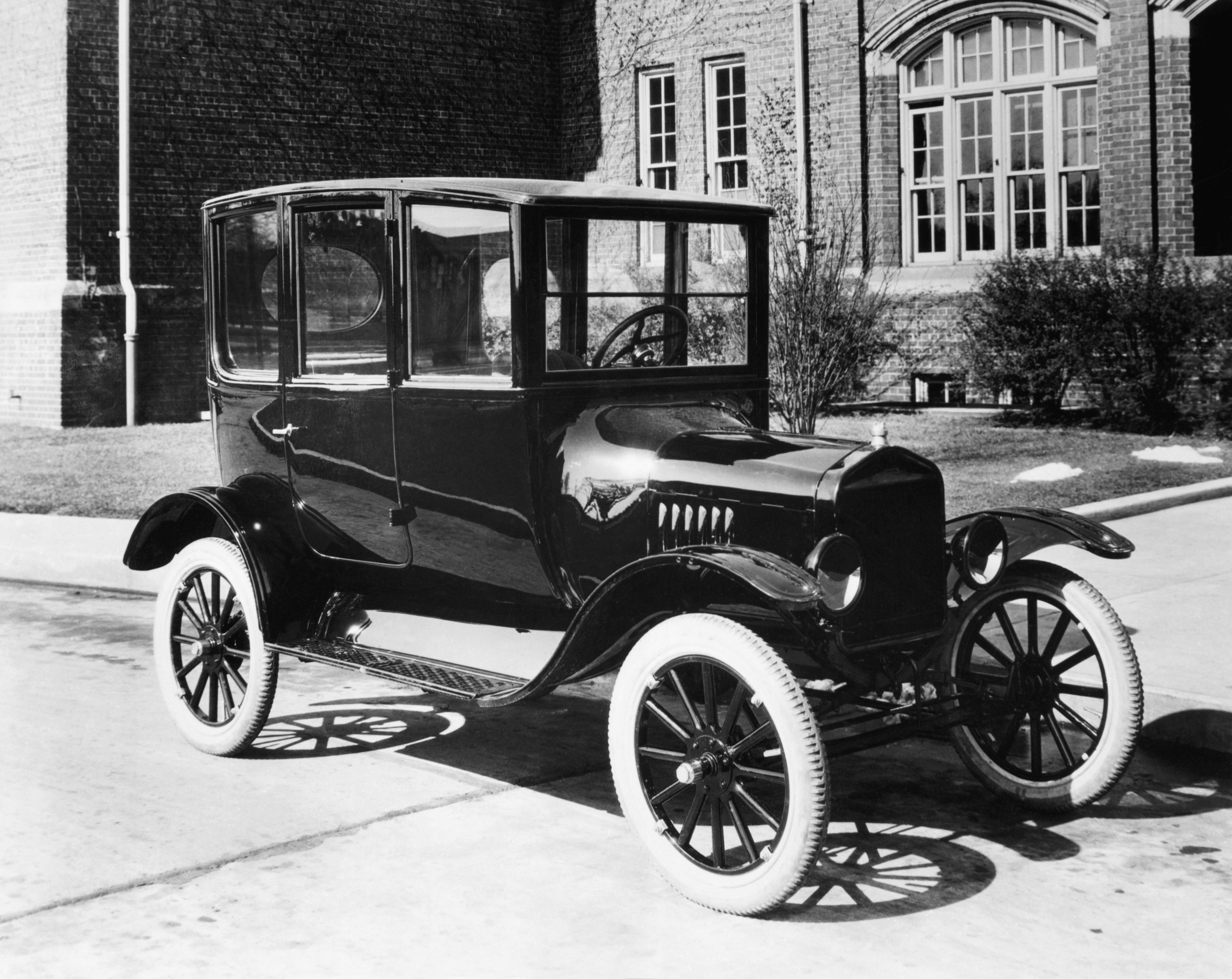Model T was perhaps the most historically important automobile ever produced. The American businessman Henry Ford introduced the Model T in 1908. Before that time, automobiles were scarce. They were expensive machines built by skilled tradesmen for a small market of wealthy customers. By the time the last Model T was produced in 1927, automobiles had become common in the United States. Many Americans of average wealth owned an automobile. In the rest of the world, cars remained rare in the 1920’s—but wherever people did own cars, they usually owned Model T’s.

Development.
Henry Ford had been in the business of manufacturing automobiles since 1899. In 1903, he founded the Ford Motor Company . Like the Model T, the company’s earliest cars were named for letters of the alphabet, beginning with the Model A of 1903. Though less expensive than most other cars, the first Fords were still too costly for most people to afford. At the time, cars were seen as luxuries, rather than necessities.
But Henry Ford had a vision for his company’s future. He wanted to produce “a car for the great multitude.” In particular, Ford saw an opportunity for a car that would serve rural Americans. Railroads and electric streetcars on rails served people in cities, towns, and even many suburbs. But farmers and others in rural America remained relatively isolated.
Mass production.
Priced from $825 to $1,000, the earliest Model T’s were still fairly expensive. But growing demand for his cars gave Ford the means to invest in a state-of-the-art manufacturing plant in Highland Park, Michigan, near Detroit. Ford borrowed and improved cost-cutting ideas from other industries. One such idea was the moving assembly line , which Ford introduced in his factory in 1913. In this arrangement, each worker worked in one place on a single, specific task. The work came to the worker, via conveyor belts . Ford’s company also produced most of its own parts. As the costs of production fell, Ford reduced the car’s price. By 1916, a Model T only cost about $400. In 1923, Ford’s annual production of Model T’s peaked at nearly 2 million cars.
The Model T came in several variations and was intended to serve a wide market. But the car was designed particularly with the rural family in mind. It had a high clearance, meaning the axles were high above the road. The car also had a high torque (rotational force). These features made the Model T well suited for the unpaved and deeply rutted roads that were typical of rural America. To limit costs, the Model T was mechanically simple with no unnecessary features, and, from 1914 to 1925, Ford offered it in only one color—black. In other respects, the car’s appearance changed markedly over 19 years of its production. But the Model T was never a stylish car.
Decline.
While the Model T was an enormous success, many motorists—particularly those in towns and cities—wanted something different. Among some people, the stodgy-looking Model T became something of a joke. Other manufacturers, particularly General Motors , saw an opportunity to overtake Ford by serving the growing number of motorists who wanted a more comfortable and stylish car. General Motors’ Chevrolet line offered such customers an inexpensive car better suited to town use and designed with attention to style.
By 1927, Ford was adapting to the trend. That year, it ceased production of the Model T to retool for a new Model A, Ford’s answer to a changing market. By then, Ford had produced more than 15 million Model T’s—a record unmatched by any other automobile model until 1972, when it was surpassed by the Volkswagen Beetle.
